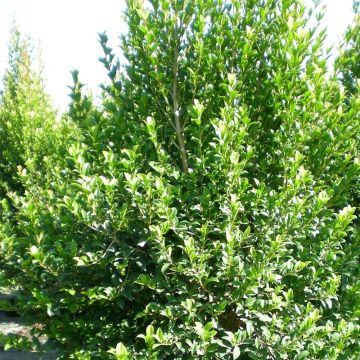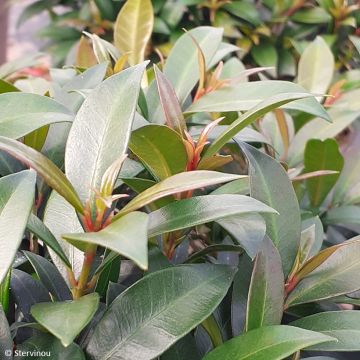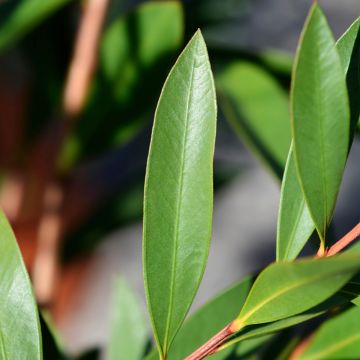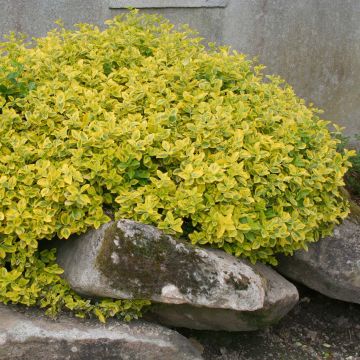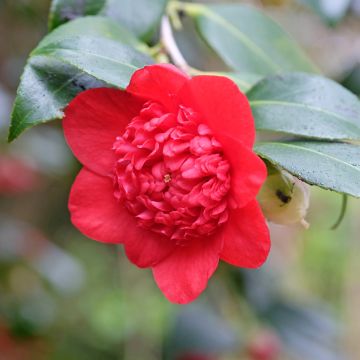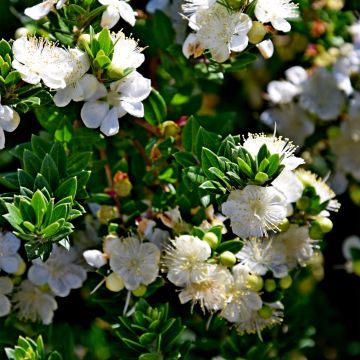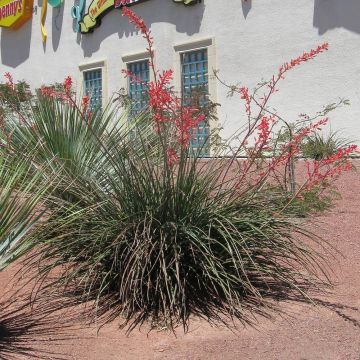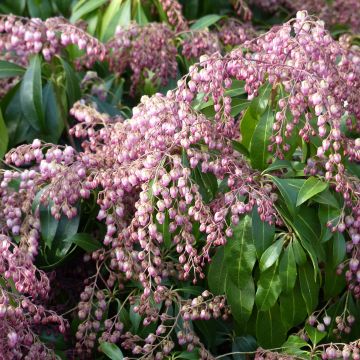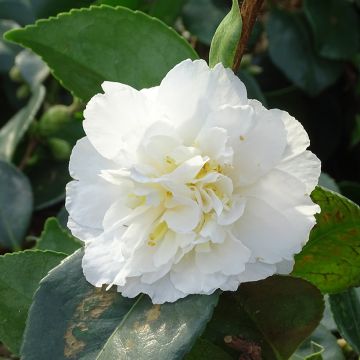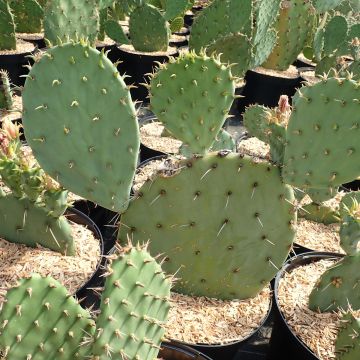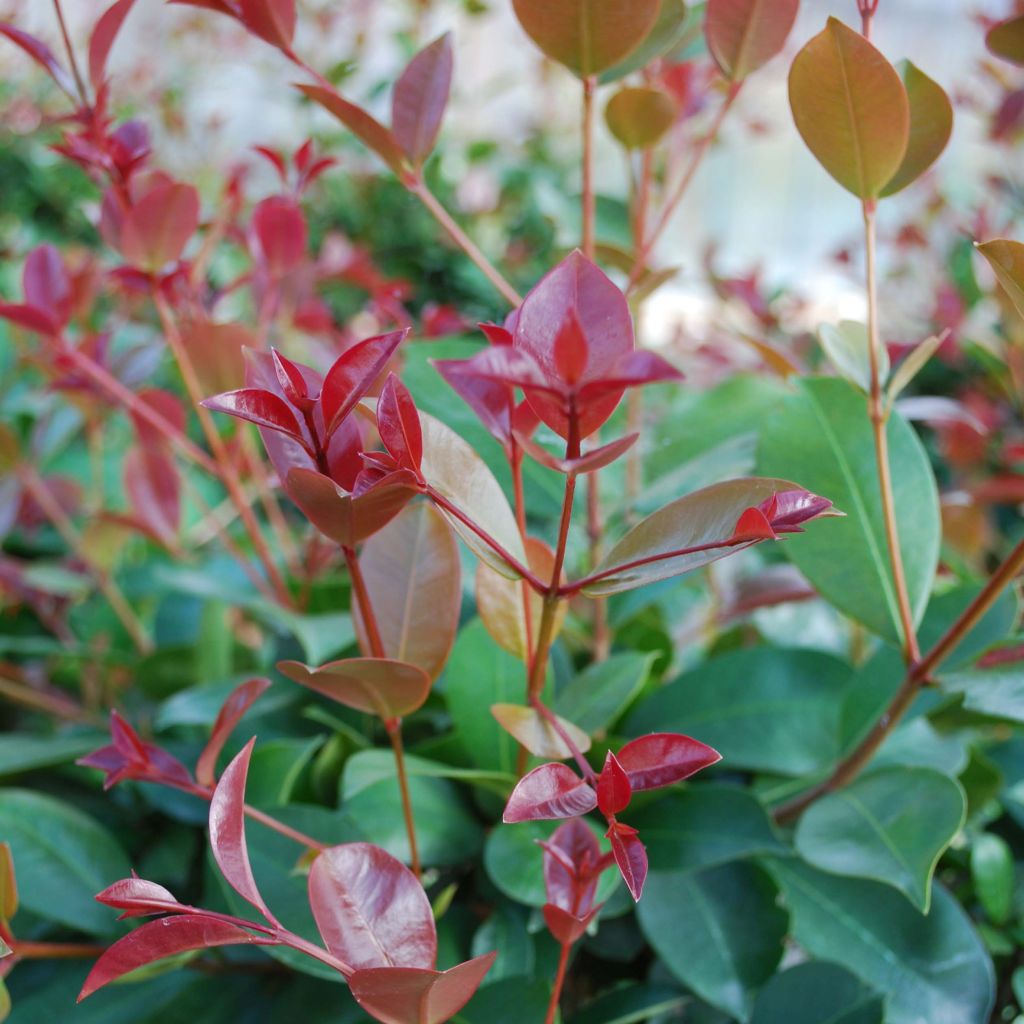

Eugenia uniflora Etna Fire
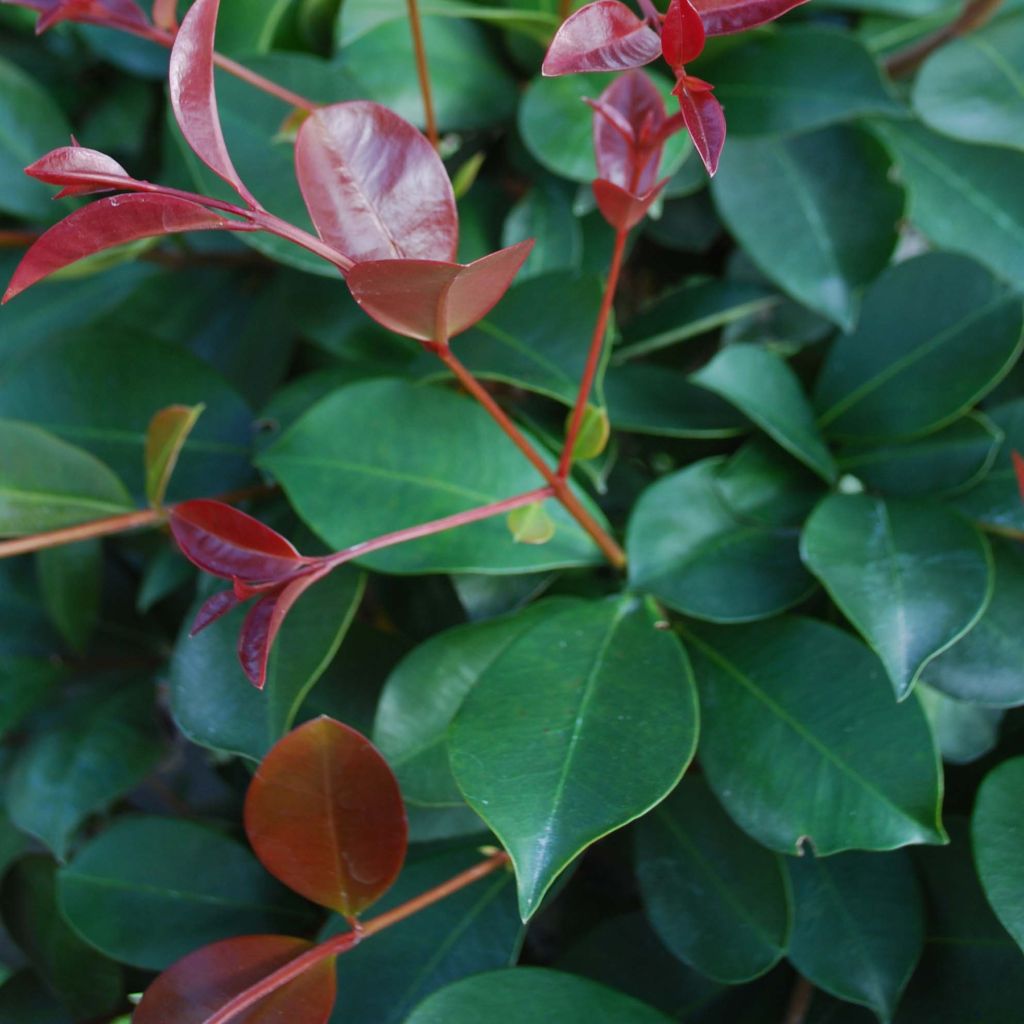

Eugenia uniflora Etna Fire
Eugenia uniflora Etna Fire
Eugenia uniflora Etna Fire
Surinam Cherry, Pitanga, Brazilian Cherry
This item cannot be shipped to the selected country
Delivery charge from €6.90
Delivery charge from €6.90
More information
Delivery charge from €6.90
Delivery charge from €6.90
More information
Schedule delivery date,
and select date in basket
This plant carries a 24 months recovery warranty
More information
We guarantee the quality of our plants for a full growing cycle, and will replace at our expense any plant that fails to recover under normal climatic and planting conditions.
From €7.90 for pickup delivery and €6.90 for home delivery
Express home delivery from €8.90.
From €7.90 for pickup delivery and €6.90 for home delivery
Express home delivery from €8.90.

Does this plant fit my garden?
Set up your Plantfit profile →
Description
Eugenia 'Etna Fire' is a superb descendant of a tropical tree called the Cayenne cherry, cultivated in Brazil for its juicy and aromatic fruits. Unlike the latter, this 'Etna Fire' variety is hardy down to -7°C (19.4 °F). It also has a more compact and dense habit, with absolutely stunning evergreen foliage: its young branches and juvenile leaves display a flaming ruby red colour, shimmering. This intense red coexists with bright green leaves on the bush. Its small white-cream flowers, resembling those of myrtles, give rise to small red fruits that can be enjoyed as fruit juice, in jams, and exotic dishes. It is a very beautiful hedge shrub for a coastal garden, especially on the Atlantic coast where it appreciates the mild and humid climate. It will also look stunning when planted in a large pot on the terrace.
Eugenia uniflora is a shrub from the myrtle family, found in the wild in southern Brazil and northern Argentina. Despite its wide distribution in different warm regions, from Africa to southern China and India, it is rarely cultivated on a large scale except in Brazil, for its fruit. This species is not demanding in terms of soil and climate but cannot tolerate any frost and prefers moist soils.
The 'Etna Fire' cultivar, introduced in 2013 by an Italian nursery, stands out for its better cold resistance, limited growth rarely exceeding 2m (6ft 7in) in height, and an extraordinary red juvenile foliage. It is suited to a coastal location. Its growth is moderately fast and its habit is naturally dense, bushy, and upright. The evergreen leaves are shiny, oval, leathery, and emit a very aromatic scent when crushed, a mixture of myrtle, camphor, and lemon. They emerge with a ruby red colour and then turn emerald green, with all these colours blending together. The self-fertile and highly attractive shrub flowers generously in June-July. The small 4-petalled flowers surrounding a tuft of long stamens are white to cream, fragrant, and 1cm (0.4in) wide. They appear in the axils of the leaves, at the base of the current year's shoots and are followed in autumn by the formation of round, flattened 'Cayenne cherries', fleshy, ribbed like certain small tomatoes. The flesh of the fruit is the same colour as the skin: a bright orange-red. It is soft, juicy, with a distinctive flavour that is both sweet, tangy, aromatic (balsamic), and spicy. This fruit is rich in vitamin C and its subtly tart taste will delight gourmets curious about exotic flavors. Each 'cherry' contains one, or more rarely, two seeds.
Eugenia 'Etna Fire' is a charming and delicious orangery plant in cold climates. In a greenhouse or conservatory, it will create an extremely decorative quartet with an orange tree, a Yuzu, or a Mimosa, evoking landscapes with exotic charm and fragrance. In mild climates, especially on the Atlantic coast of our country, it can be used as a medium-sized hedge - it tolerates pruning well - or in a flower bed, or even in a well-sheltered orchard, alongside blueberries, raspberries, Myrtus ugni 'Flambeau', and May berries. It can also be planted in an evergreen hedge, accompanied by Sarcococca, spring-flowering broom, dwarf rhododendrons in non-calcareous soil, or red-flowered Callistemons (Callistemon citrinus 'Splendens').
Eugenia uniflora Etna Fire in pictures
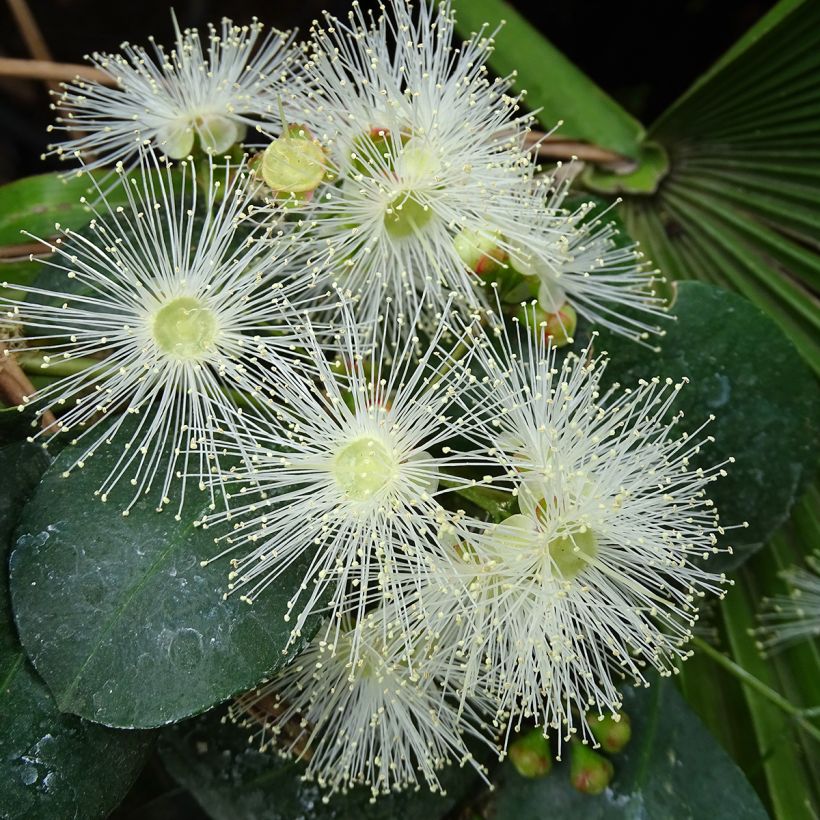

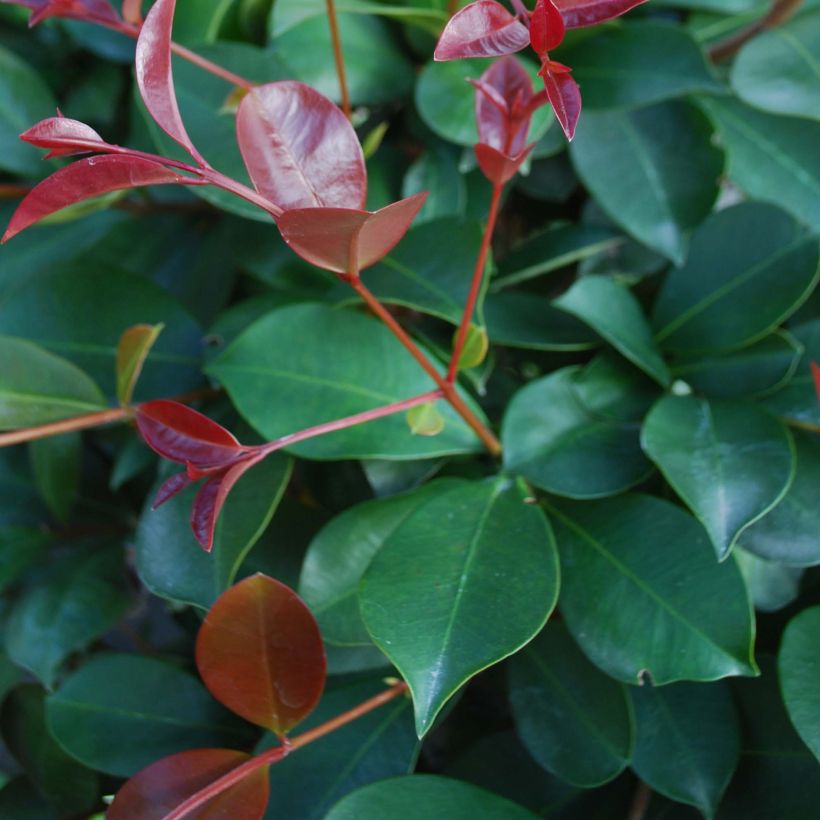

Plant habit
Flowering
Foliage
Botanical data
Eugenia
uniflora
Etna Fire
Myrtaceae
Surinam Cherry, Pitanga, Brazilian Cherry
South America
Other Eugenia
View all →Planting and care
Eugenia uniflora 'Etna Fire' is not demanding in terms of soil type as long as it is properly drained. It will thrive in any soil that is deep enough and well-prepared, preferably fertile, and remains moist in summer. While it may tolerate temporary drought once established, flowering and fruiting, which are abundant under favourable conditions, will be greatly affected by a lack of water. A loose soil, whether humus-rich, sandy, loamy, slightly acidic, neutral, or even slightly calcareous, will do. It tolerates salt spray well. Plant it after the last frost north of the Loire, and in September-October in very mild climates. It will thrive in full sun or partial shade and prefers warm roots. Under these conditions, it is hardy down to -7°C (19.4 °F) and can live for many years. Surround it with winter protection in the coldest regions, and insulate it from the cold as much as possible. Place it in the warmest corner of the garden, in full sun against a south-facing wall. However, it will be necessary, in our regions further away from the sea, to grow it in a large pot for winter storage in a bright, unheated area. To shape it, you can prune the stems in March-April or after flowering to encourage branching.
Pot cultivation:
Provide good drainage at the bottom of the pot, which should be large in volume. Use a light substrate, enriched with leaf compost, and apply a slow-release fertilizer in late winter and autumn. Water generously in summer, allowing the soil to dry out a little between waterings. The more you water, the more your Eugenia will flower and fruit. This self-fertile variety does not require the presence of another plant nearby to bear fruit.
Planting period
Intended location
Care
Evergreen shrubs
Haven't found what you were looking for?
Hardiness is the lowest winter temperature a plant can endure without suffering serious damage or even dying. However, hardiness is affected by location (a sheltered area, such as a patio), protection (winter cover) and soil type (hardiness is improved by well-drained soil).

Photo Sharing Terms & Conditions
In order to encourage gardeners to interact and share their experiences, Promesse de fleurs offers various media enabling content to be uploaded onto its Site - in particular via the ‘Photo sharing’ module.
The User agrees to refrain from:
- Posting any content that is illegal, prejudicial, insulting, racist, inciteful to hatred, revisionist, contrary to public decency, that infringes on privacy or on the privacy rights of third parties, in particular the publicity rights of persons and goods, intellectual property rights, or the right to privacy.
- Submitting content on behalf of a third party;
- Impersonate the identity of a third party and/or publish any personal information about a third party;
In general, the User undertakes to refrain from any unethical behaviour.
All Content (in particular text, comments, files, images, photos, videos, creative works, etc.), which may be subject to property or intellectual property rights, image or other private rights, shall remain the property of the User, subject to the limited rights granted by the terms of the licence granted by Promesse de fleurs as stated below. Users are at liberty to publish or not to publish such Content on the Site, notably via the ‘Photo Sharing’ facility, and accept that this Content shall be made public and freely accessible, notably on the Internet.
Users further acknowledge, undertake to have ,and guarantee that they hold all necessary rights and permissions to publish such material on the Site, in particular with regard to the legislation in force pertaining to any privacy, property, intellectual property, image, or contractual rights, or rights of any other nature. By publishing such Content on the Site, Users acknowledge accepting full liability as publishers of the Content within the meaning of the law, and grant Promesse de fleurs, free of charge, an inclusive, worldwide licence for the said Content for the entire duration of its publication, including all reproduction, representation, up/downloading, displaying, performing, transmission, and storage rights.
Users also grant permission for their name to be linked to the Content and accept that this link may not always be made available.
By engaging in posting material, Users consent to their Content becoming automatically accessible on the Internet, in particular on other sites and/or blogs and/or web pages of the Promesse de fleurs site, including in particular social pages and the Promesse de fleurs catalogue.
Users may secure the removal of entrusted content free of charge by issuing a simple request via our contact form.

































